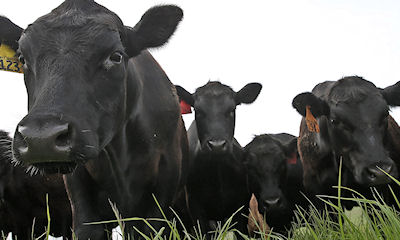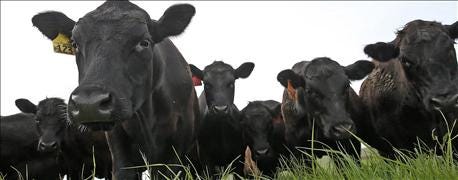October 15, 2015

Mowing weeds in pastures early in the season cut down on seed heads that encourage new growth, Chris Penrose, an Ohio State University Extension educator, reminds beef and livestock producers.
Related: 6 steps to determining a 2015 pasture rental rate
Early in the season, grass is in its reproductive stage and focuses more on seed development, Penrose said.

Cows graze on grass at the Stemple Creek Ranch on April 24, 2014 in Tomales, California. (Photo by Justin Sullivan/Getty Images)
"Once that stage is done and the seed heads are removed by mowing, that encourages more leaf growth, which in turn improves the quality and quantity of your pastures," Penrose said. "Producers who clip the weeds in their pastures again later in the season will weaken the root reserves of perennial weeds and potentially kill late summer annual weeds before their seeds can mature."
Penrose offers other tips producers can use to both improve the use of their pastures as well as to potentially increase the performance of their cattle.
"Up to 75% of the costs of keeping livestock is in feed," Penrose said, "so any way that we can find methods to reduce costs will improve profit potential for farmers."
Penrose mentions additional tips besides mowing to keep pastures in top shape:
• Divide the pastures, allowing livestock to graze only one area at a time. This allows the pastures to regrow and avoids overgrazing.
• Graze your fescue pastures in late fall and in winter. After those grasses have gone through several killing frosts, the fescue will have a higher sugar content, which will make it more attractive to livestock.
Related: 3 Top Recommendations For Fall Pasture Seeding
• Increase both the yield and protein content of fescue pastures by applying 50 pounds of nitrogen in late summer to early fall. This can help make the fescue an ideal late fall and winter stockpiled feed.
"Now's the time to start thinking about pastures for next year," Penrose said. "Test your soils, and get your pH levels where they need to be. If your soil fertility levels are too low, it will hurt the chances of getting more desirable forages to grow."
Source: Ohio State University Extension
You May Also Like




